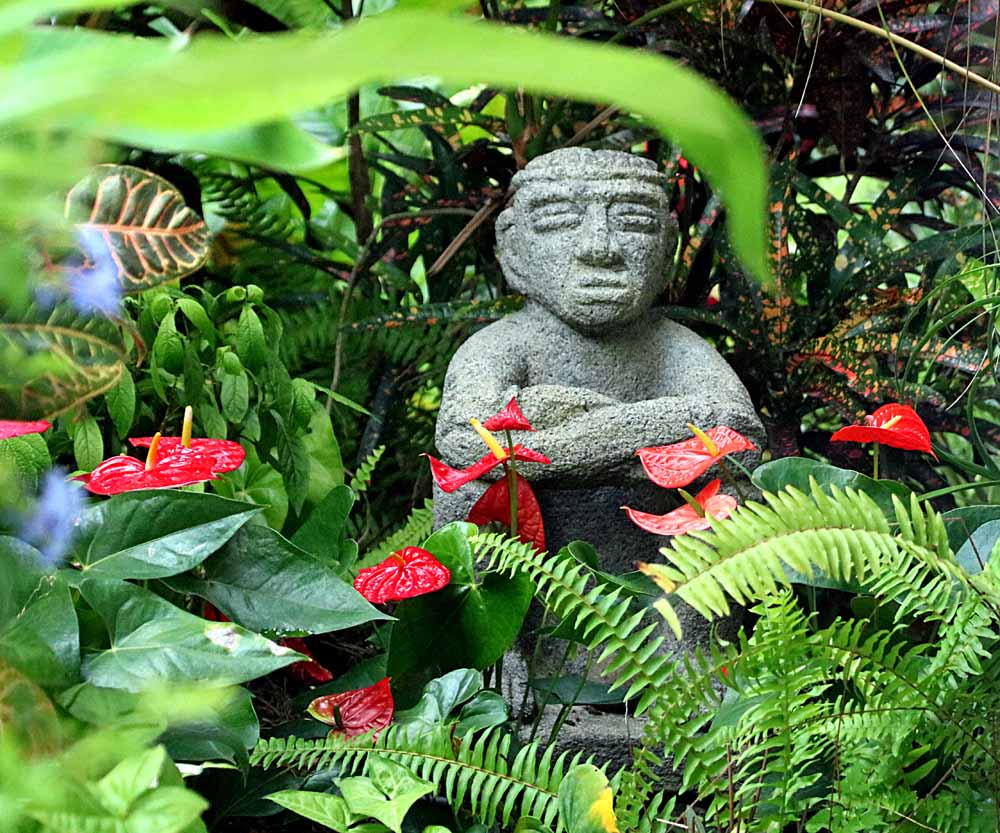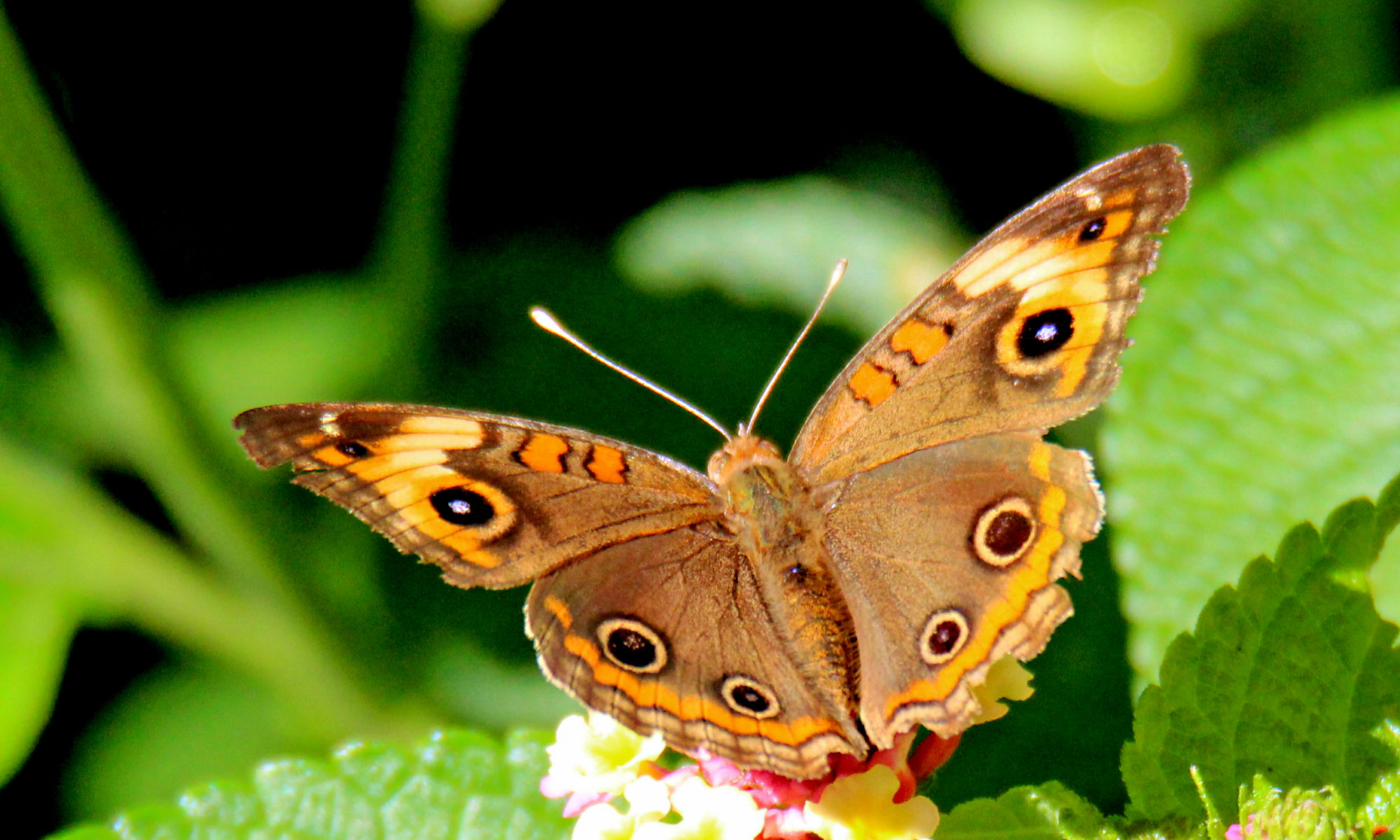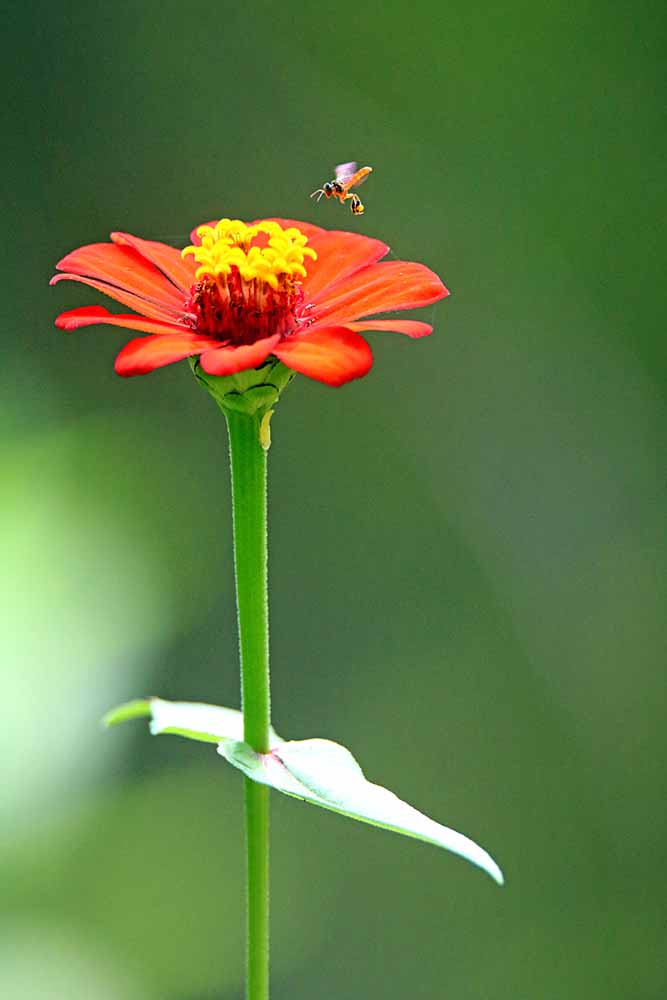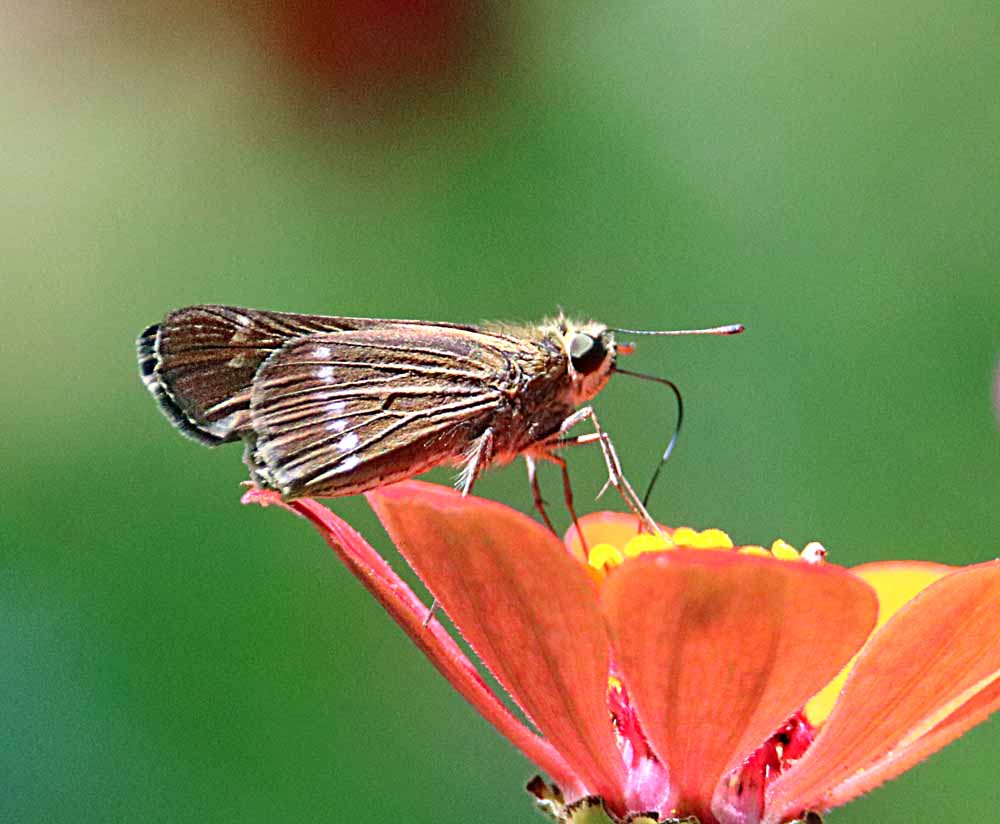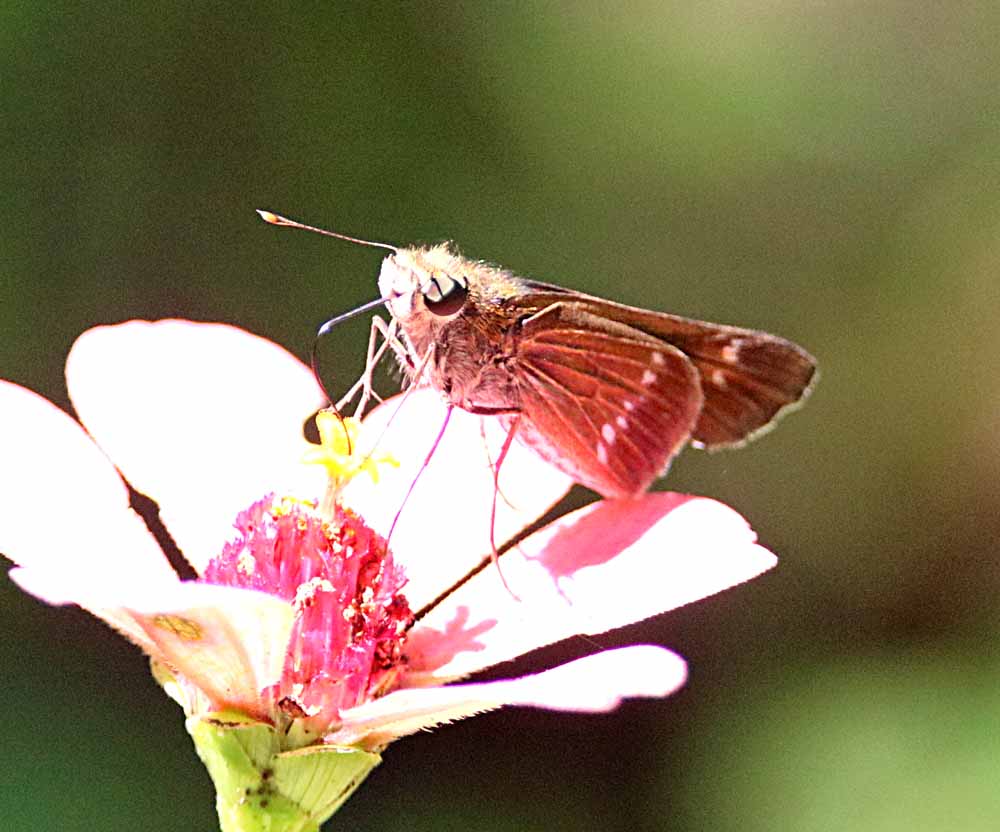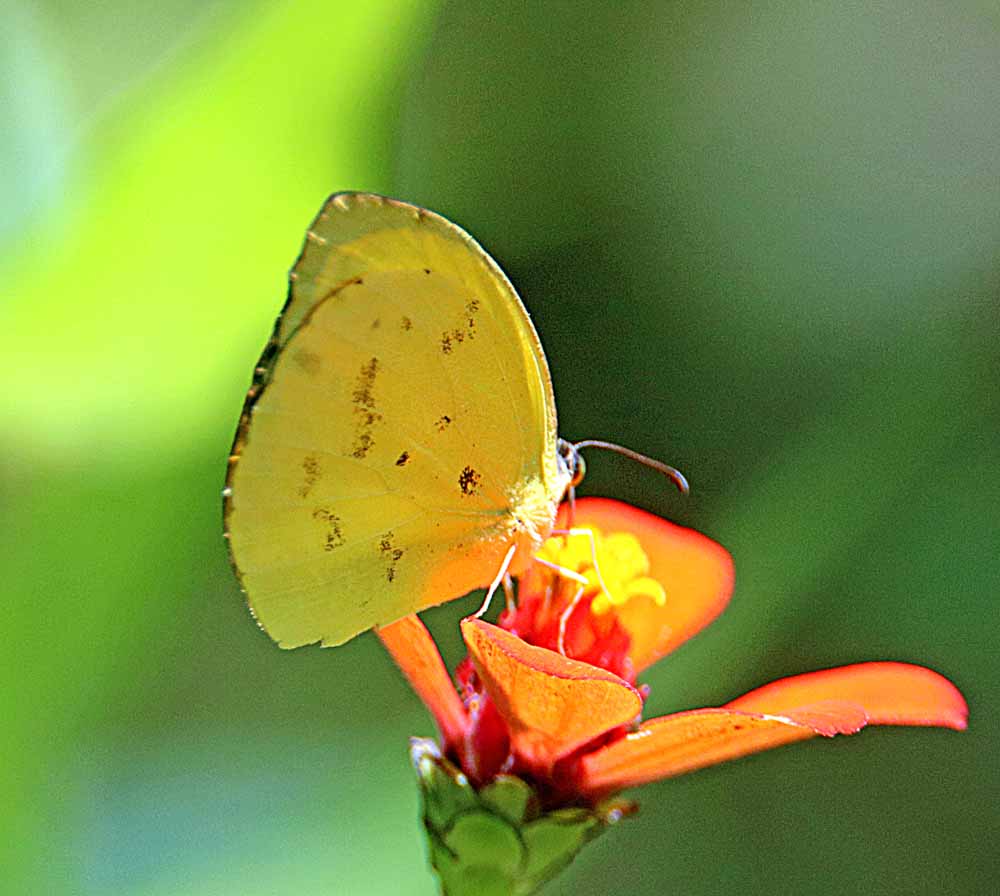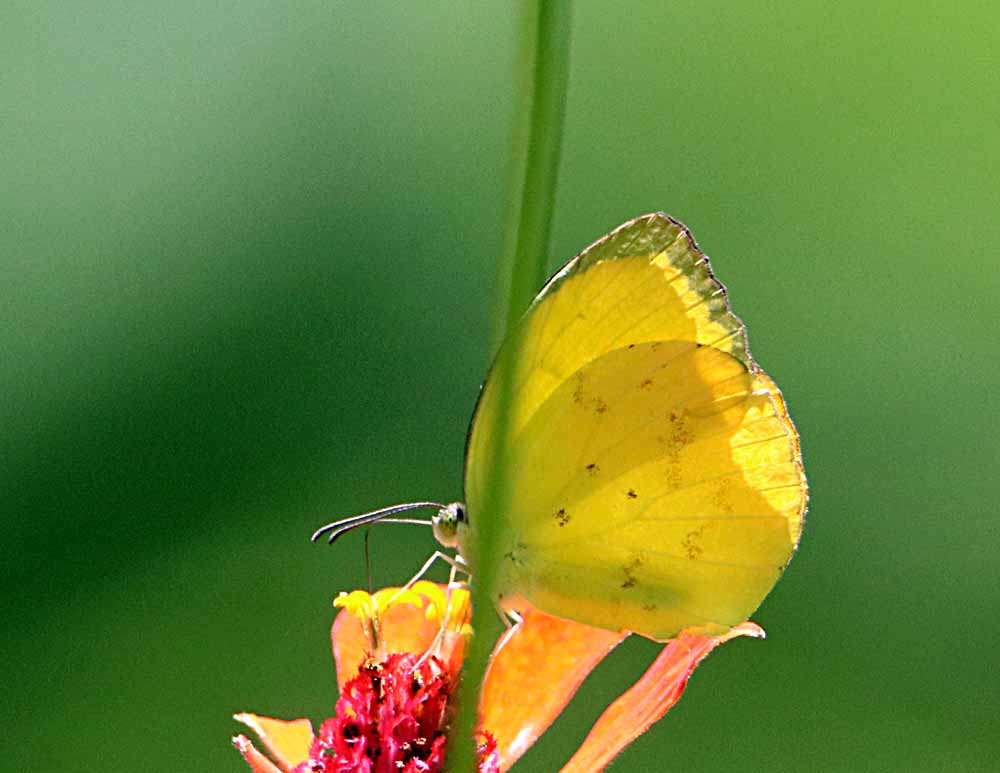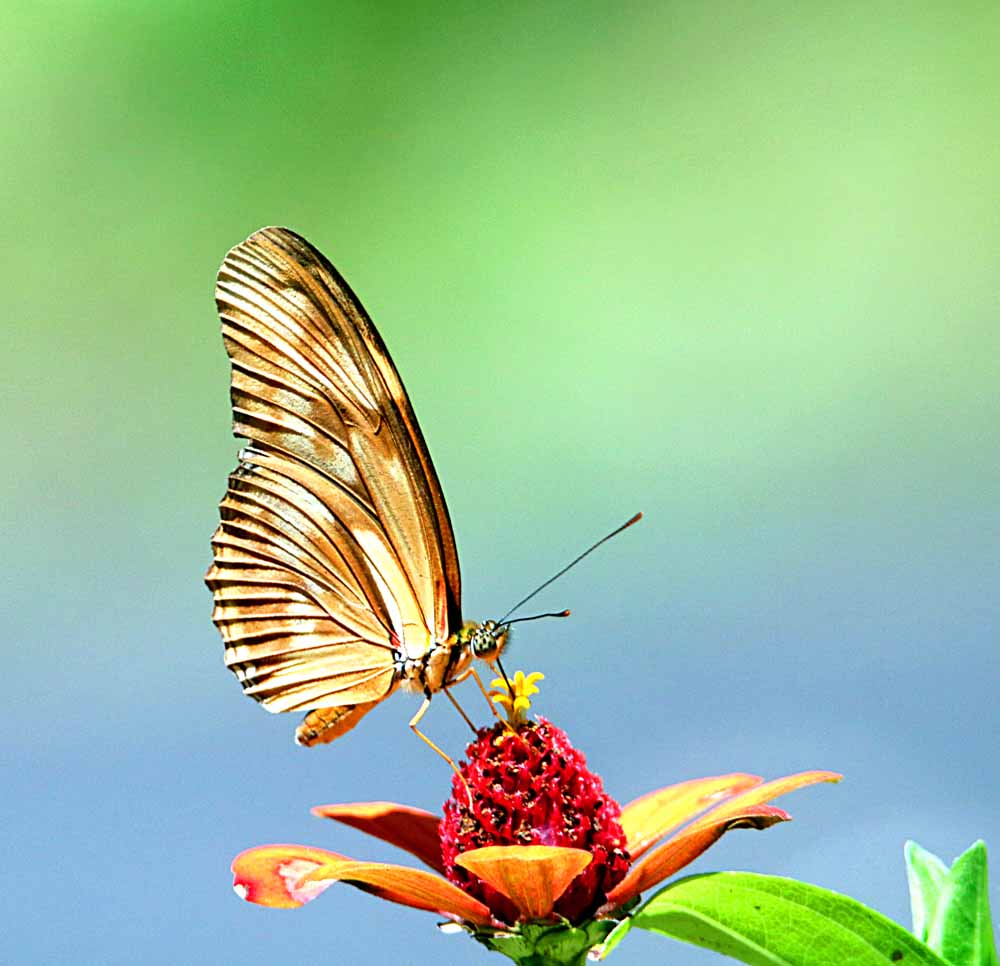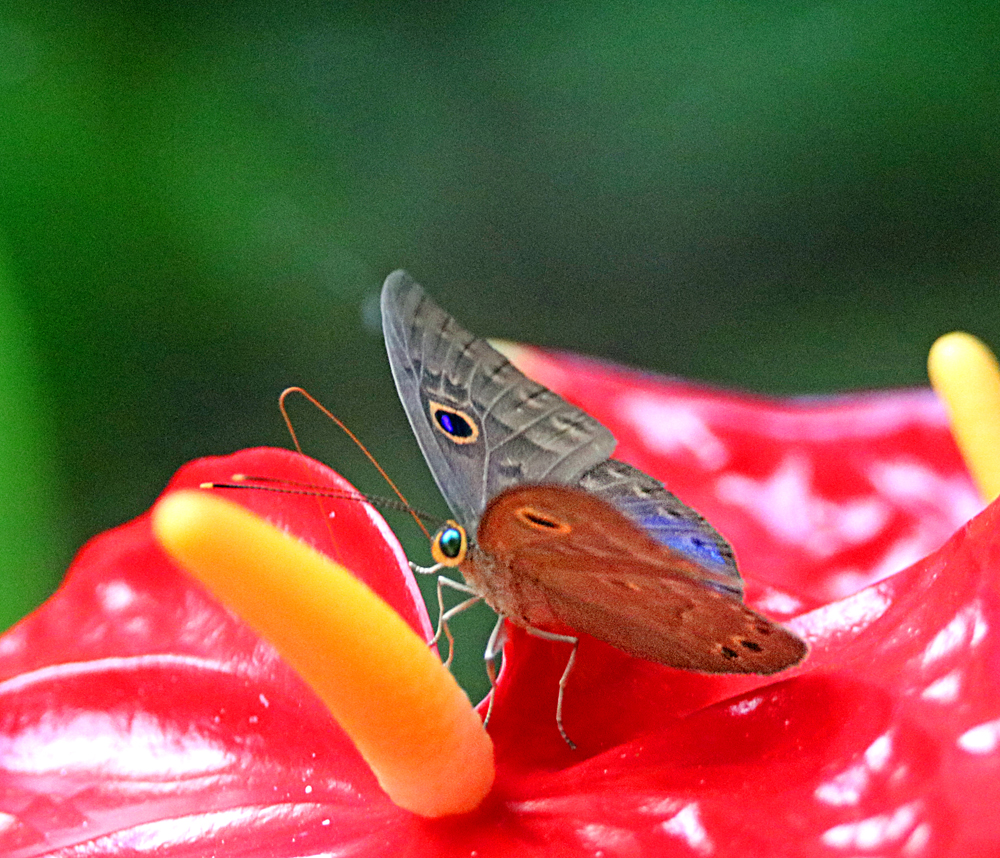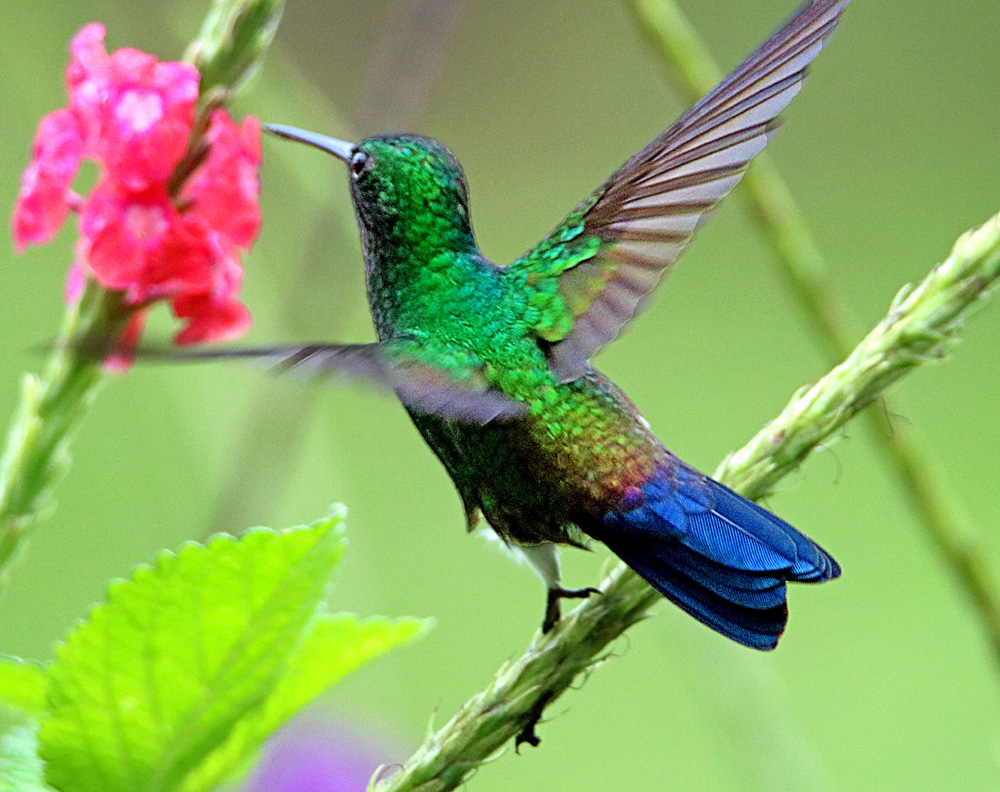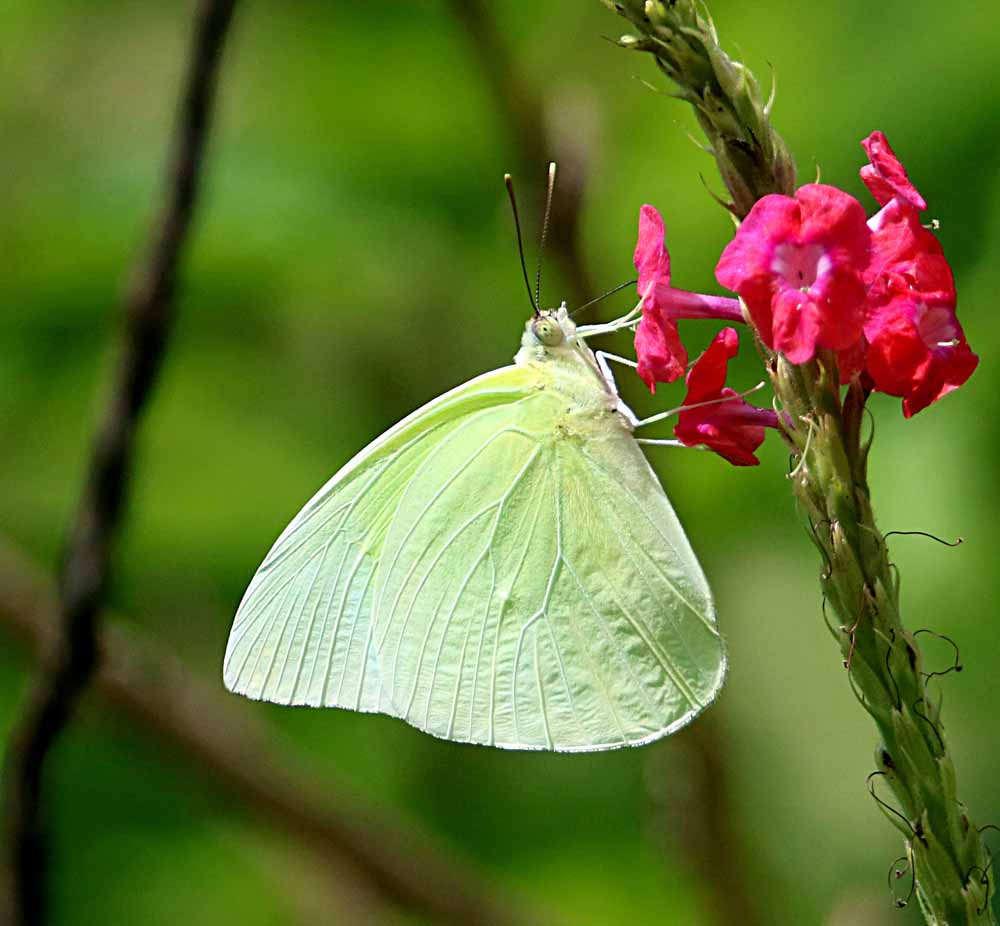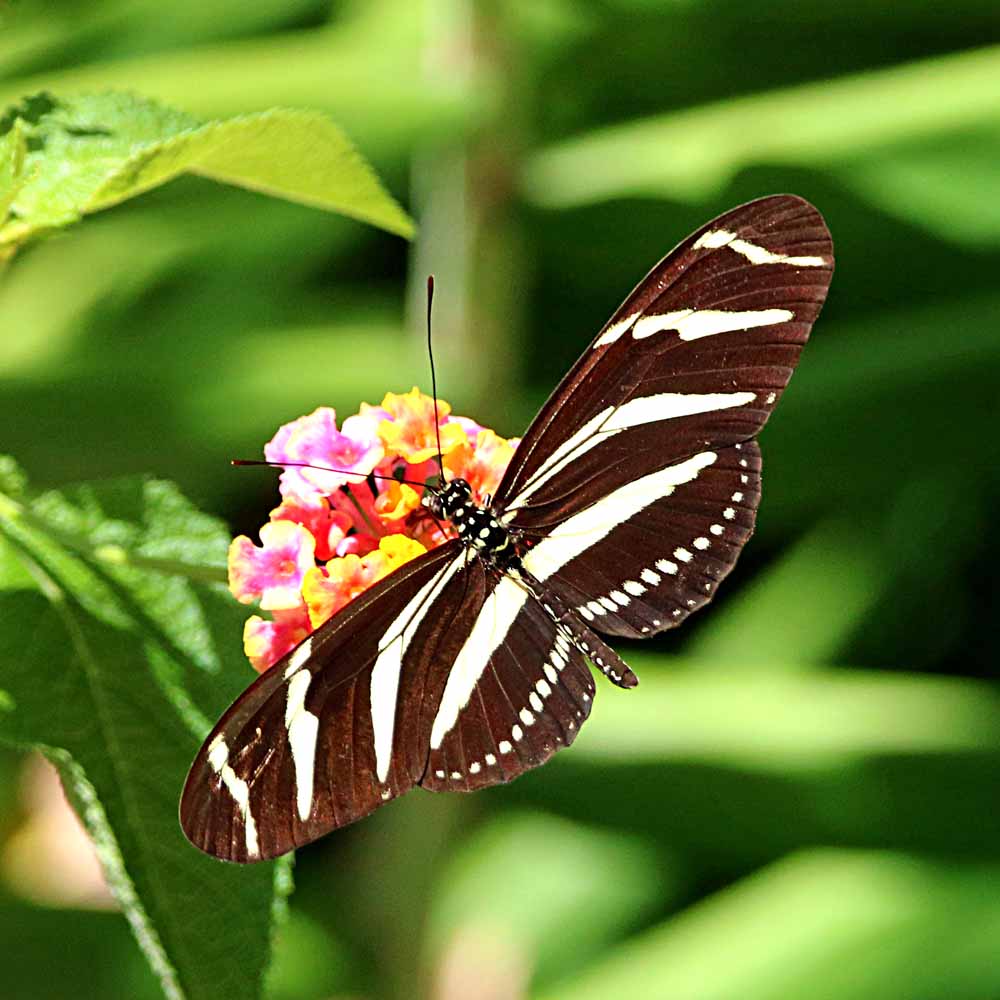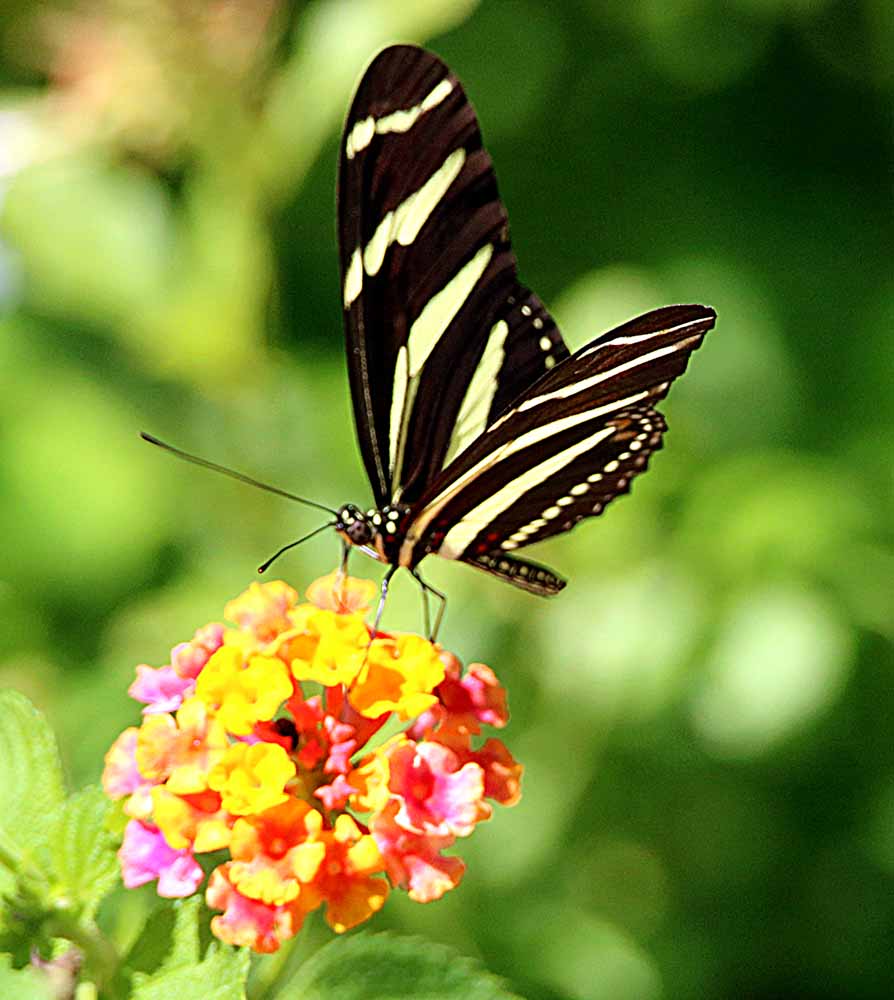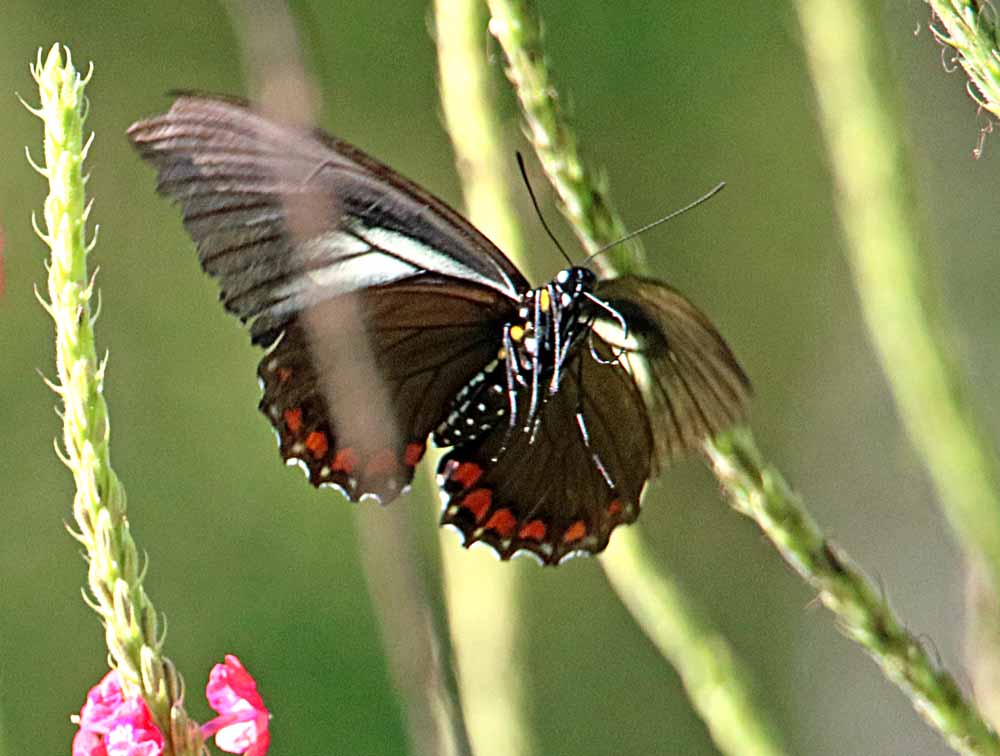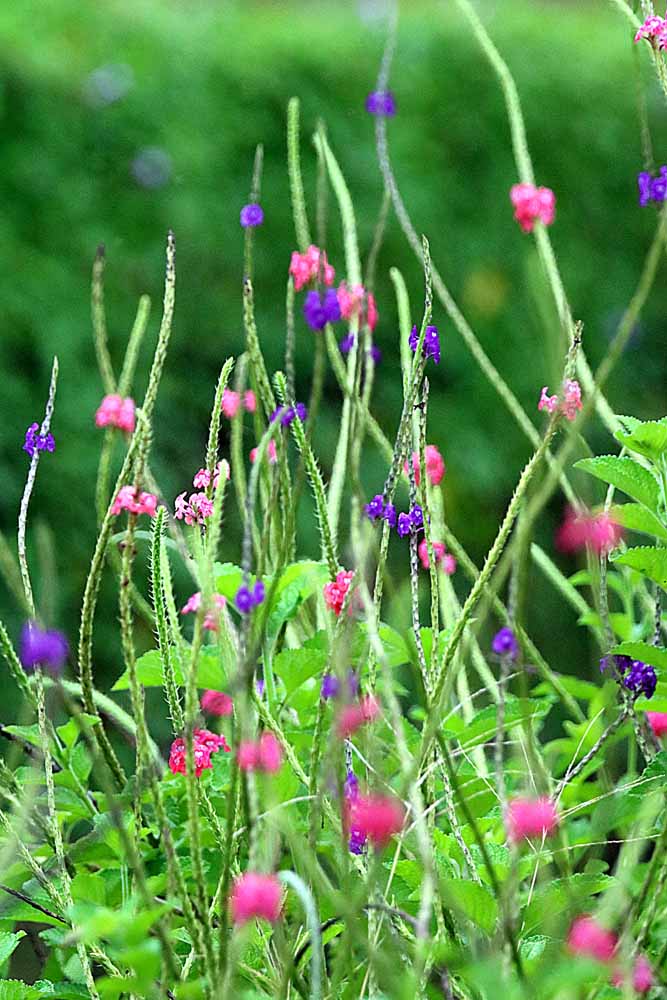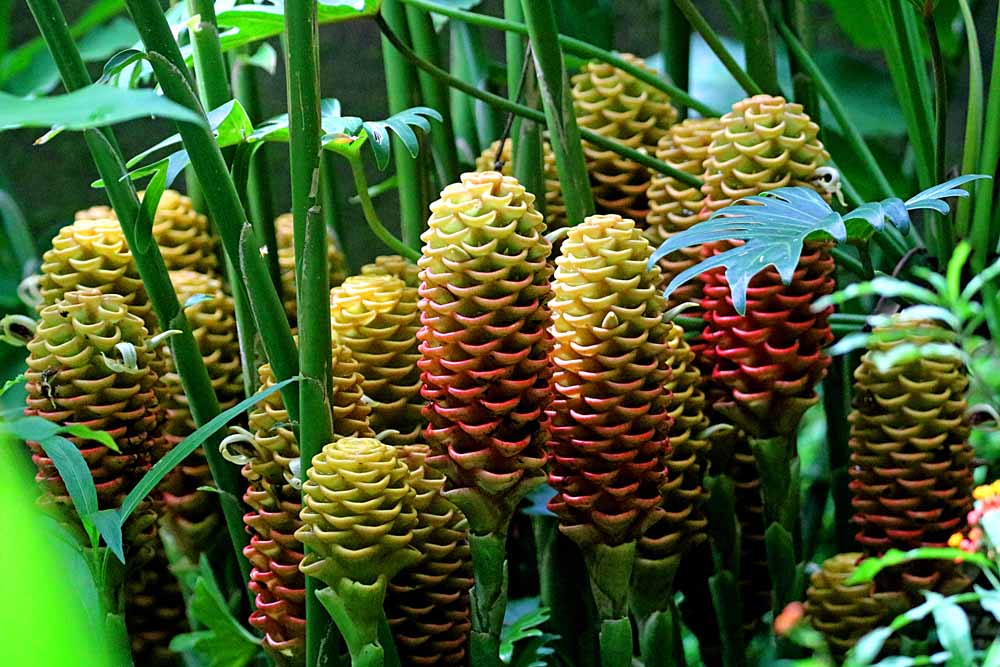We have continued to have strange or different weather this year with July usually bright sun until mid-afternoon when the showers start. Well, the showers have been mostly the same with somewhat more this year, going all night occasionally, and even a few times into the morning. Which is OK, but, the mornings and early afternoons have had much less sunshine which is simply required for many of the flowers. It has been cloudy most of each day until the rain starts every day for over a month now!
My Porter Weeds are blooming less, the Lantanas have quit blooming as has the Golden Shrimp and the new Golden Dewdrop and Tropical Milkweed, all of which attract butterflies. The Zinnias that K planted next to my yard are blooming, but smaller or dwarfed by less sun. The only two things that seem to thrive in the dominant shade are my Maraca Plants (Shampoo Ginger) and the Anthuriums which I added some more of just to have some color.
The Desert Rose did poorly for awhile, which I blamed on repotting, but it is coming back strong now with blooms on each stem! (But it’s not a butterfly flower!) 🙂 It does need sun though, and I have it on the east side for morning sun, which is when we get what little we may get now.
Here are 6 shots of the ones that are blooming in July & August with another new one that I might not keep, the Ginger Lily. A shot of the “Garden Man” for the emailed version and then 5 more below that with explanations . . .
